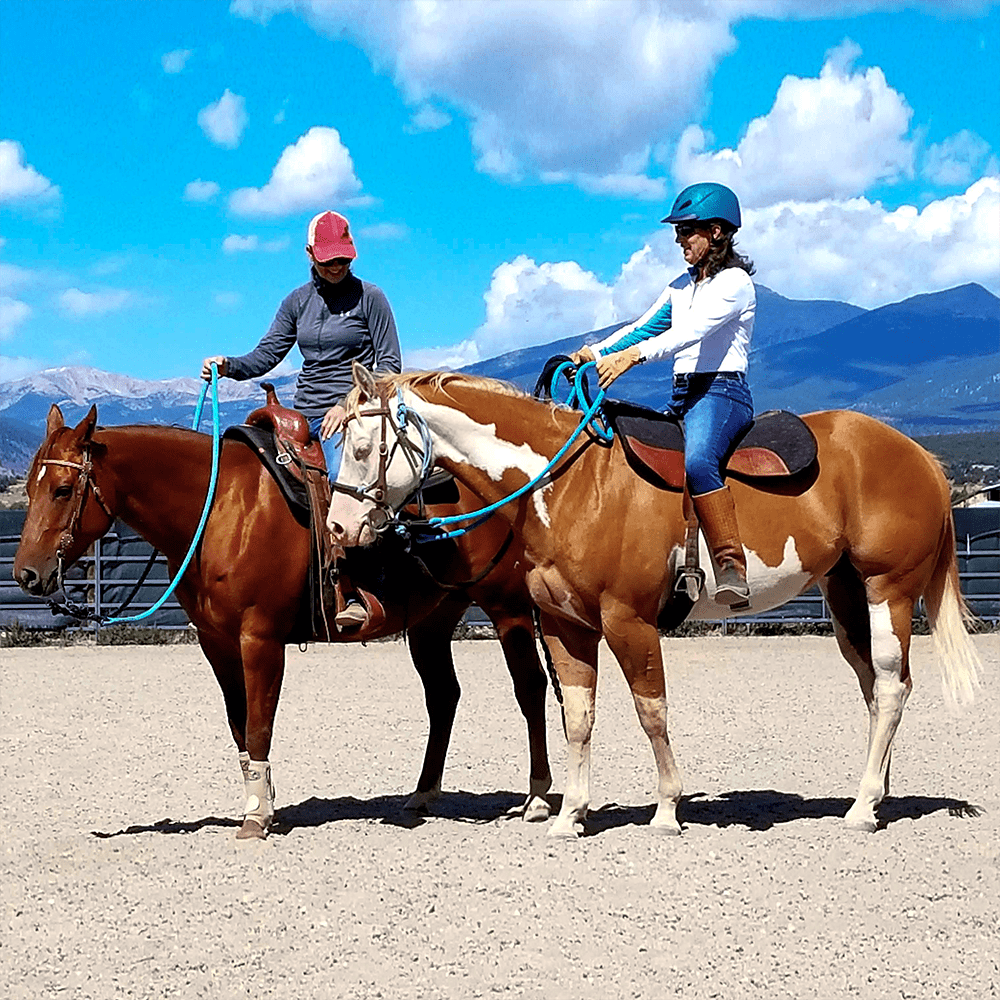Question Category: Issues from the Saddle
Question: Julie,
My horse holds the bit in her mouth when I am trying to take the bridle off and then throws her head up in the air and panics still holding onto the bit. I have tried undoing the cheek strap on the bridle first but she still gets upset. Also tried giving a tidbit to get her to open her mouth while trying to take the bridle off. Can you help, as this is turning into a bad habit? She is perfect in every other way.
Janet
Answer: Janet,
Thank you for this great question; it is a problem that many people have. In fact, my husband has been working through this issue on his new horse, who now he hangs his head and pops that bit right out of his mouth. Horses that throw their heads up in the air when unbridling have learned to be afraid of the process from being hit in the teeth with the bit. It may have only happened once, but getting a chunk of metal slammed into your teeth is enough to make you wince, and that’s all the horse is doing when he throws his head up in the air when you take the bridle off.
Hitting the horse in the teeth with the bit is usually done unknowingly by pulling the headstall over his ears and pulling the bit out of the horse’s mouth before he has had a chance to spit it out. It then slams into his teeth and gets stuck on his lower teeth, which hurts, so the horse throws his head up in the air, which in turn causes more pressure against his teeth, especially if the person pulls on the bridle at that time. It only has to happen once for the horse to learn to panic every time he is unbridled; then it becomes a self-fulfilling prophecy for the horse because every time he throws his head up, the bit hits his teeth.
When you unbridle a horse, you should gently pull the headstall over the ears while lifting up on it, and always hold that upward pressure (slight) until the horse lowers his head. As he drops his head, you slowly release the upward pressure and allow the horse to spit the bit out; at anytime the head comes up, lift up on the head stall again. Experienced trainers know that this is a critical process and spend whatever time it takes in the beginning to teach the horse to drop his head to spit the bit out, so he learns how to protect his teeth. As you pull the headstall over his ears, lay your forearm on the horse’s neck behind the poll, so that if he raises his head, your hand moves with him and so that your arm is stabilized by the horse. If your arm is free-floating, you will end up jerking the bridle and bit around. Take all the time you need—always bridle and unbridle slowly. When the horse tenses at all, pause what you are doing, holding your ground (neither advancing nor retreating) and wait for the horse to relax (drop his head).
All of training is in the power and timing of the release; it cannot be overstated that the horse needs the release and it has to be instantaneously when the horse begins to respond (not once he has completely done it). In this case, you’ll only release the upward pressure on the bridle when he lowers his head; if you released the pressure while his head was up, you would be training him to raise his head. Move very slowly and wait patiently for him to lower his head and open his mouth to spit the bit out. If he is really clamped down on the bit, you can very gently jiggle the bit in his lips, but do not let it drop too low and take the chance of it hitting his teeth. Do not try and force him to open his mouth, just wait. It is rarely a good idea to try and bribe a horse to do anything with a treat. Let him find the right answer.
Some important caveats for bridling are to never bridle or unbridle a horse that is tied, for the safety of both you and your horse. Actually you shouldn’t do anything to a horse’s head when he is tied because it could create a pull-back problem (see the Q&A section of my website). Always move slowly around a horse’s head, being aware of the blind spots just below his nose and directly in front of his eyes. Try to have the head stall adjusted correctly for the horse before putting it on; you can tighten the bridle with it on his head, but if you have to loosen the bridle, take it off. There are many articles and Q&As on my website that relate to this issue, especially the advance and retreat method of desensitizing and several head-shy Q&As. These same principles apply to bridling problems as well.
JG
Copyright ©Julie Goodnight 2000. All Rights Reserved. No part of this website may be reproduced without owner’s express consent.

